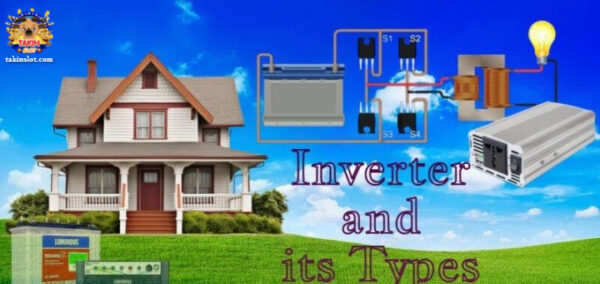Introduction
In today’s electricity-dependent world, inverters are indispensable for ensuring a steady power supply. But what exactly are inverters, and how do they function?
What Is an Inverter?
An inverter is an electronic gadget that changes direct current (DC) electricity into alternating current (AC) electricity. This conversion is crucial because most electrical appliances operate on AC power, while many power sources produce DC power.
Conversion Process
Inverters transform DC power input into usable AC output, allowing DC power sources like batteries or solar panels to power appliances and devices requiring AC power.
Types of Inverters
Inverters come in various types, including modified sine wave inverters, pure sine wave inverters, grid-tie inverters, and off-grid inverters, each suitable for specific applications.
How Do Inverters Work?
Inverters consist of input terminals, an inverter circuit, output terminals, and control circuitry. When DC power is supplied, the inverter circuitry converts it into AC output while the control circuitry regulates voltage and frequency.
Applications
Inverters are widely used in residential, commercial, and industrial settings for powering appliances, machinery, and equipment.
- Residential Use: They power household appliances during outages and are crucial for renewable energy systems like solar PV.
- Commercial and Industrial Applications: Inverters are vital for maintaining uninterrupted power supply in critical systems.
Advantages
Inverters offer advantages such as energy efficiency and reliable power backup solutions.
Common Technologies
Technologies like Pulse Width Modulation (PWM) and Maximum Power Point Tracking (MPPT) enhance inverter performance.
Factors to Consider When Choosing an Inverter
Consider power requirements, efficiency ratings, and maintenance needs when selecting an inverter.
Maintenance Tips
Regular inspection, cleaning, and ventilation are essential for ensuring inverter longevity and optimal performance.
Future Trends
Inverter technology is evolving to integrate with renewable energy sources and smart grid systems for enhanced sustainability and reliability.
Conclusion
Understanding inverters’ operation, applications, and advantages is crucial for leveraging their full potential in modern power systems.
FAQs
What is an inverter and how does it work?
An inverter is a piece of electronic equipment that transforms direct current (DC) electrical power into alternating current (AC) electrical power. This conversion allows DC power sources like batteries or solar panels to power appliances and devices requiring AC power.
What are the types of inverters?
Inverters come in various types, including modified sine wave inverters, pure sine wave inverters, grid-tie inverters, and off-grid inverters, each suitable for specific applications.
How do inverters function?
Inverters consist of input terminals, an inverter circuit, output terminals, and control circuitry. When DC power is supplied, the inverter circuitry converts it into AC output while the control circuitry regulates voltage and frequency.
What are the advantages of inverters?
Inverters offer advantages such as energy efficiency and reliable power backup solutions during outages or grid failures.
What are the future trends in inverter technology?
Inverter technology is evolving to integrate with renewable energy sources and smart grid systems, enhancing sustainability and reliability in modern power systems.




